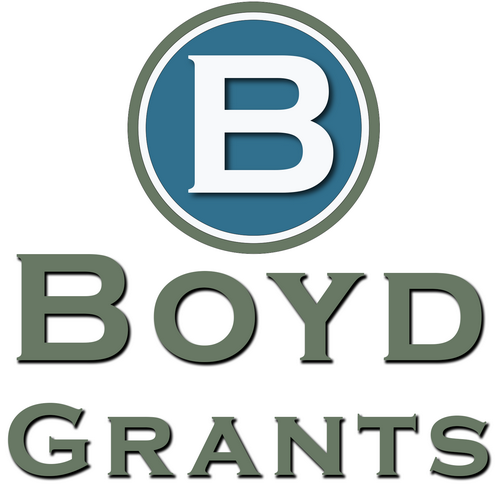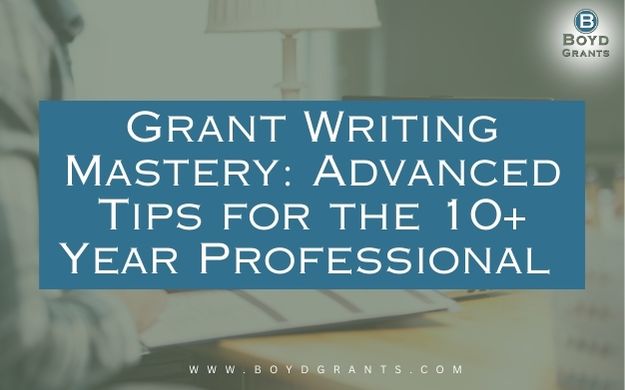For those who have been in the grant writing game for over a decade, it’s safe to say that you’ve already mastered the basics. You’ve honed your skills, built relationships with funders, and navigated the ups and downs of the grant landscape. But even for seasoned professionals, there’s always room to grow, refine, and stay ahead of the curve. Here are some advanced grant writing strategies that will help take your proposals—and your career—to the next level.
1. Leverage Data for Predictive Insights
At this stage in your career, you’ve likely used data to back up your proposals, but now it’s time to dive deeper. Don’t just use data to explain the problem or track outcomes—use it to predict future trends and needs. Funders are increasingly looking for innovative projects with sustainable impact, and predictive data can demonstrate your organization’s foresight and strategic planning.
- Data-driven forecasting: Use historical data, trends, and patterns to forecast the impact of your project. Showing how your initiative can evolve or scale based on predictive insights makes your proposal more compelling.
- Visual storytelling: Use advanced data visualization tools to convey complex data in an easily digestible format. Funders appreciate clean, visual presentations that make data compelling and easy to understand.
2. Master the Art of Strategic Relationships
By now, you know that relationships with funders are crucial, but it’s time to refine your strategy. As an advanced professional, your role as a grant writer often goes beyond just submitting proposals. You’re now a strategic partner who can help funders achieve their own goals, which ultimately benefits your organization.
- Engage in proactive communication: Reach out to program officers before you start writing. Ask insightful questions and get clarification on aspects of their priorities that might not be clear in the RFP. These pre-proposal conversations can give you a competitive advantage.
- Cultivate long-term partnerships: Instead of just looking for funding, look for opportunities to collaborate with funders on shared objectives. This builds trust and can lead to more sustainable funding relationships.
3. Elevate the Narrative with Impactful Storytelling
At this level, you’re no longer just telling a story; you’re weaving a narrative that connects the dots between your project’s objectives, the community need, and the broader social impact.
- Refined storytelling techniques: Use storytelling to demonstrate not just the need for your project, but the transformation it will bring. Incorporate personal stories, testimonials, or case studies that show the human element behind the data. This can help funders connect with your cause on a deeper level.
- Focus on systems change: Funders are increasingly interested in projects that drive long-term systems change, not just short-term fixes. Make sure your narrative highlights how your project aligns with broader, transformative goals.
4. Build a Culture of Grant Success Within Your Organization
As a veteran grant professional, you’re likely already managing multiple proposals at once, but have you considered creating a more structured grant-writing culture within your organization?
- Develop internal capacity: Create training programs for staff, collaborators, and even board members on grant writing best practices. Help your organization understand the complexities of grant funding so that everyone is aligned on expectations, timelines, and goals.
- Streamline workflows: Implement advanced project management tools to track multiple submissions, monitor progress, and ensure deadlines are met. Platforms like Asana or Monday.com can help keep everything organized and reduce the likelihood of errors.
5. Keep Abreast of Emerging Trends and Funding Landscapes
As the landscape of funding continues to evolve, keeping up with emerging trends is key to staying ahead of the competition. At this level, you should be actively seeking out new opportunities and adapting to shifts in the funding environment.
- Diversify funding sources: Explore emerging funding sources, such as impact investing or crowdsourcing platforms, which may not be on the radar of less experienced grant writers.
- Focus on DEI: Diversity, equity, and inclusion (DEI) are not just buzzwords—they’re essential in today’s funding climate. Ensure that your proposals reflect a genuine commitment to DEI, both in your project design and in how you engage with the communities you serve.
- Understand the philanthropic shift: Funders are moving toward results-based funding, and many are adopting an outcomes-based approach. Show them how you plan to track and report on long-term impacts, not just short-term outputs.
6. Incorporate Sustainability from Day One
Long-term sustainability is a major focus for many funders, and as an advanced grant professional, you know that a proposal’s strength lies in its potential for enduring impact.
- Plan for sustainability: From the outset, think about how your project will sustain itself after the grant term ends. This could mean securing additional funding sources, integrating the project into existing systems, or creating revenue-generating opportunities.
- Leverage partnerships for sustainability: Strong, strategic partnerships with other organizations can provide long-term support. Highlight these partnerships in your proposal and demonstrate how they will contribute to the sustainability of the project.
7. Master the Post-Award Phase
As an experienced grant professional, you know that securing the grant is only part of the equation. Now, it’s time to excel in managing the award.
- Refine your reporting: The post-award reporting phase is where you can truly shine. Create streamlined systems for collecting data and reporting progress to funders. Use your expertise to ensure that every metric is aligned with the funder’s expectations and that reports are submitted in a timely and professional manner.
- Manage relationships post-award: Continue to engage funders after the grant is awarded. Regular updates and transparent communication can foster trust and increase the likelihood of receiving future funding.


Recent Comments